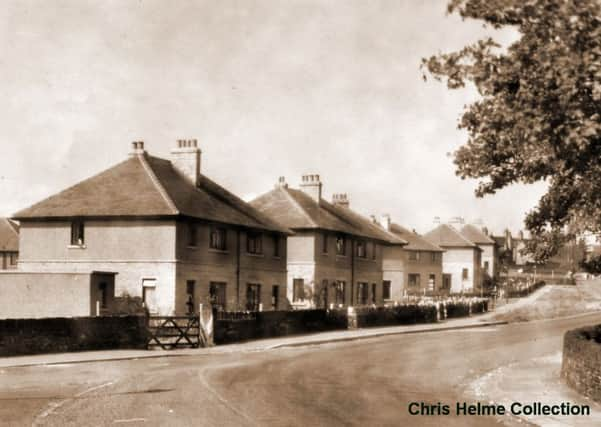Echoes of the past: Newly built houses following World War Two


This was something that had been talked about after the Great War but they never really materialised in sufficient numbers.
In 1919 £2400 was spent on buying land at Smith House for a new housing development scheme. This was to comprise of 39 houses with a living room, scullery and three bedrooms, a further 95 houses with the addition of a parlour and 14 houses with an additional fourth bedroom.
Advertisement
Hide AdAdvertisement
Hide AdThe first 27 houses were ready by June 1921,with the first four tenants moving in before Christmas. All paying a weekly rent of nine shillings or 45pence in today’s money. Following a number of problems a further 104 houses were built.
In 1933 the council decided to build 20 houses and 2 bungalows near the bottom of Crowtrees Lane. But, the high cost to build these properties caused uproar in the council chamber which saw Councillor Lawson walk out. If the high cost was a problem the situation got worse, when it was discovered the properties were built on quarried land and deemed unsafe.
During the late 1930s further small scale housing projects were carried out but further development would have to wait until after the war.
The post 1945 house building programme was to go right through to the early 1970s. It was Councillor Gilbert Lawson who was now the chairman of the housing committee, who was to drive the new building programme through with his committee. Also ensuring that Brighouse unlike many of its neighbours would not have any high-rise flats.
Advertisement
Hide AdAdvertisement
Hide AdThe building programme started in 1946, not with new houses in the conventional sense, but a kind of property I am sure many will remember. In December 50 post war pre-fabs arrived at Crowtrees in Rastrick, and another 43 in Whinney Hill, behind the Lightcliffe Road cemetery were erected. This was to help towards relieving the demand for social housing, which had some families squatting in some old army huts at Southowram and on Birds Royd.
The much awaited building programme was now underway, properties that followed included: Stoney Lane estate c1949 - 1953; 1947 Summerfield Avenue; 1949 Oakroyd Drive; 1951 Field Lane - plans announced to build 600 houses on a green field site; 1953/62 Field Lane - the first phase of the estate completed. 1950/57 Deep Lane Clifton; 1956/57 Lillands Lane estate developed, 1965/67 Highmoor Lane;1968/69 Kiln Fold; 1969/70 Sunnybank Grange; 1970/71 Ash Grove, Clifton; 1960’s Sandholme estate Hipperholme; 1968 Towngate, Hipperholme; 1968/72 Field Lane - further building work on the estate; 1970/72 Whinney Hill estate built. and 1974: Waterloo Road.
Many of these new developments were encouraged to start community associations; Brighouse and District Tenants association started in 1950 being just one of many.
Returning to our featured photograph these are just some of the new properties built in Deep Lane, Clifton. It must have seemed very luxurious at the time to find your family moving from properties which had probably been listed on a clearance order. These old properties would have not had the benefit of inside facilities or a garden that the new houses in Deep Lane was offering. Life was certainly going to change - thankfully for the better.